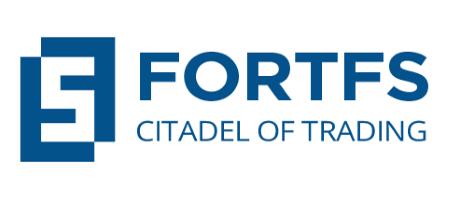Download Relative Volatility Index RVI Correct Version For Amibroker AFL

The relative volatility index measures other indicators of market dynamics compared to other indicators. Relative Volatility Index (RVI) is a volatility measurement tool with a range from 0 to 100. The indicator measures the volatility of crypto assets such as Bitcoin (BTC) and can indicate when this volatility is bullish or bearish. As a range-bound oscillator, bullish levels start above 60 and bearish levels start below 40. The indicator resembles the popular Relative Strength Index (RSI), but it measures volatility with standard deviation. The direction of this volatility can help traders make effective trades.
Why traders increasingly seek insights via CVOL indexes – Reuters.com
Why traders increasingly seek insights via CVOL indexes.
Posted: Tue, 18 Oct 2022 07:00:00 GMT [source]
The RVI can be used as a confirming indicator since it uses a measurement other than price as a means to interpret market strength. Readings greater than 50 indicate that the volatility is more to the upside. Without exaggeration, it is one of the most popular technical indicators.
Trading with the combination of the RVI and Fibonacci Retracement Levels
Furthermore, technical analysis is one of the widely used trading methods in the market. Again, the relative volatility index indicator is not meant to be used as a standalone indicator for trading. Since the RVI is best suited for confirming trade signals, we should definitely combine the indicator with other trading tools and methodologies.
- Other indicators such as RSI can tell us how strong the trend is.
- The Relative Strength Index is a momentum indicator that measures the speed as well as the change in price movements.
- RVI does not measure price movements, it is an excellent technical indicator for measuring market strength.
Any investment decision you make in your self-directed account is solely your responsibility. This vouches for the effectiveness of the RVI indicator because RSI is the most-popular indicator in crypto trading. Both indicators currently send buy signals because Bitcoin bottomed-out near historic support levels and is trading in extremely oversold territory. The lines on the RVI indicator are smoothened using an Exponential Moving Average (EMA).
Relative Volatility Index (RVI)
This means that you should buy whenever the price of an asset moves to the oversold level and short when the price moves to the overbought level. You do that by first calculating the first average gain and the first average loss. A few weeks ago, we looked at the Relative Strength Index (RSI), which is one of the most popular indicators in use today. You have certainly heard about the indicator if you watch popular finance shows or read any technical book on markets (or in a podcast). Also, note that Relative Volatility Index can provide the wrong signals. That’s why you shouldn’t forget about stop losses and risk management.
- However, if a stock opens at $8, jumps to $14, declines below $6, and then rises to $13 in a single session, in that case, we can talk about high volatility.
- Similarly, assets like cryptocurrencies are known for their high volatility.
- Speed Resistance Lines (SRL) is a support and resistance indicator that was developed by Edson Gould.
- The RVI indicator is particularly helpful in crypto markets which experience high volatility.
If the data source does not provide high/low accuracy values, then StdDev for ten days is replaced by default with EMA for 14 days. The Relative Strength Index is a momentum indicator that measures the speed as well as the change in price movements. Do you know how to interpret the above-mentioned technical indicator? When RVI is applied, the value of RVI moves from zero to 100. It is important to note that the main lines to watch are 20 and 80.
Relative Vigor Index (RVI): Definition, Formula, Uses in Trading
In this relative volatility index system, we are going to watch for potential Fibonacci retracement levels and trade bounces/breakouts that are confirmed by the RVI. Notice how the indicator occasionally went above or below the limits. If Bitcoin is extremely overbought, it doesn’t necessarily mean that it’s going to stop appreciating.
Supply Chain Latest: North America Freight Turning the Corner – Bloomberg
Supply Chain Latest: North America Freight Turning the Corner.
Posted: Tue, 16 May 2023 07:00:00 GMT [source]
There is also another approach, that using 20 and 80 as overbought and oversold conditions. Some traders use 30 and 70 values for setting this confirmation indicator. The Relative Volatility Index calculations first employ standard deviations for the daily highs and standard deviations for the daily lows. Finally, the Relative Volatility Index indicator calculates the RVI. The following are the possible values for the RVI calculation. It does not duplicate signals of other oscillators, but just confirms them.
Advantages and Limitations of RVI
The Relative Volatility Index is a valuable tool for traders seeking to measure the direction of market volatility and confirm the signals other indicators provide. While it shares similarities with the RSI, the RVI’s focus on standard deviation makes it a more suitable indicator for gauging volatility. The Relative Volatility Index (RVI) by Donald Dorsey is a confirming indicator that measures the direction of volatility. The RVI is similiar to the Relative Strength Index (RSI) except instead of daily price change standard deviation is used. Adjustable guides are given to fine tune the trading signals.

The RVI offers several advantages, including its ability to measure the direction of volatility and serve as a confirming indicator for other trading signals. This can help traders improve the accuracy of their trading decisions and manage risk more effectively. This script utilises the RSI and EMA indicators to enter and close the trade. The relative strength index (RSI) is a momentum indicator used in technical analysis.
Creating and Back-testing a Contrarian Indicator Using Pure Volatility.
This is a very interesting trade setup, which is a smart way of catching upcoming bullish moves. After entering our trade, the next two candles are bullish and the price begins to expand rapidly as MCD approaches $95. In this article, I am going to share with you how to use the https://forexhero.info/nadex-forex-broker/ in trading. However, as we have written before, you just need to know how to apply and interpret the indicator. See our Terms of Service and Customer Contract and Market Data Disclaimers for additional disclaimers.
What does relative volatility tell you?
The Relative Volatility indicator measures the standard deviation of price changes within a defined range of lookback periods to determine market direction. The indicator value is normalized as a percentage between 0 and 100.
A step by step guide to help beginner and profitable traders have a full overview of all the important skills (and what to learn next  ) to reach profitable trading ASAP. In order to open a long position, you should wait for the indicator to rise over the 50 level. However, if you fail to catch the first opportunity to enter, wait until it will be over 60. Your trade should be terminated when the indicator drops below 40. When the index of relative volatility gets below 40 or grows higher than 60, in such a case it is better to close position. The conventional approach utilizes the 20 and 80 as the oversold and overbought levels, respectively.
) to reach profitable trading ASAP. In order to open a long position, you should wait for the indicator to rise over the 50 level. However, if you fail to catch the first opportunity to enter, wait until it will be over 60. Your trade should be terminated when the indicator drops below 40. When the index of relative volatility gets below 40 or grows higher than 60, in such a case it is better to close position. The conventional approach utilizes the 20 and 80 as the oversold and overbought levels, respectively.
Is RVI a leading indicator?
RVI is naturally a leading indicator, and when 'partnered' with other oscillators, such as Stochastics or RSI, they can deliver definitive and high quality overbought and oversold trading signals.

